Netflix works in ChromX Build 190824 after installing Firefox ESR!
RaspAnd Pie 9 for Raspberry Pi 3 B and B+ :: Build 190903 :: with Google Chrome, YouTube, Evie Launcher, Aurora Store and F-Droid. All working very well!
 RaspAnd Pie 9 for Raspberry Pi 3 B and B+ :: Build 190903 :: with Google Chrome,YouTube, Aurora Store and F-Droid – Free and Open Source Android App Repository. NOTE: Aurora and F-Droid are replacements for Yalp Store and Aptoide App Manager. Yalp doesn’t work anymore. Aptoide works very well in RaspAnd Pie, but I had no room for it in this build. You can, however, easily install Aptoide yourself.
RaspAnd Pie 9 for Raspberry Pi 3 B and B+ :: Build 190903 :: with Google Chrome,YouTube, Aurora Store and F-Droid – Free and Open Source Android App Repository. NOTE: Aurora and F-Droid are replacements for Yalp Store and Aptoide App Manager. Yalp doesn’t work anymore. Aptoide works very well in RaspAnd Pie, but I had no room for it in this build. You can, however, easily install Aptoide yourself.
About Raspberry Pi 4
This build (RaspAnd Pie 190903) doesn’t work on the new Raspberry Pi 4. You can also not yet find another build (with Android) which works on the Raspberry Pi 4 computer.
ABOUT RaspAnd Pie 9 Build 190903
RaspAnd Pie 9 runs very well on a Raspberry Pi 3 Model B and 3 Model B+. I.e. the system is pretty responsive if you use a micro SD card of good quality. RaspAnd Pie has the following apps pre-installed: Google Chrome, Aurora Store, F-Droid, Aida64, Rotation Control Pro, Evie Launcher, Termux, ES File Explorer. Unfortunately not Google Play Store, but Aurora and F-Droid work as good replacements for it.
About Aurora Store
Aurora Store is an alternate to Google’s Play Store, with an elegant design, using Aurora you can download apps, update existing apps, search for apps, get details about in-app trackers, spoof your location and much more. So Aurora Store works as a pretty good replacement for Google Play Store. I think.
About F-Droid
F-Droid is an installable catalogue of FOSS (Free and Open Source Software) applications for the Android platform. The client makes it easy to browse, install, and keep track of updates on your device.
About GetJar
The worlds biggest Open App Store for Android. If you can’t find the app you want on at Aurora or F-Droid you can always try with GetJar. Just download the APK file and install it!
SCREENSHOTS
1. The new Desktop using Evie Launcher
2. Using Aurora Store
3. The Desktop after first boot
4. Changing wallpaper with ES File Manager
5. Installing Spotify with Aptoide – (Spotify works very well and you can install Aptoide if you want to)
6. Running Spotify
7. Running Termux – you can use Apt!
8. WiFi Settings – (WiFi works very well)
9. AIDA64 running showing the system info
ExTiX Deepin 19.8 live based on Deepin 15.11 (latest) with Skype, Spotify, Refracta Snapshot and kernel 5.3.0-rc6 (latest) :: Build 190828
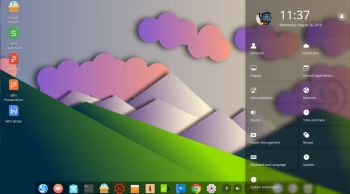 NEWS 190828 ABOUT ExTiX Deepin
NEWS 190828 ABOUT ExTiX Deepin
I’ve released a new version of ExTiX Deepin today (190828). This ExTiX Build is based on Deepin 15.11 released by Deepin Technology 190719.
NEW FUNCTIONS etc
1.You can run ExTiX from RAM. Use boot alternative 3 (load to RAM) or Advanced. A wonderful way to run Linux if you have enough RAM. Everything will be super fast. When ExTiX has booted up you can remove the DVD or USB stick.
2. You will have the opportunity to choose language before you enter the Deepin 15.11 Desktop. All main languages are supported.
3. I have replaced Deepin Installer with the Reborn version of Deepin Installer. Better in every way.
4. I have replaced kernel 5.0.8-extix with kernel 5.3.0-rc6-exton. Kernel 5.3.0-rc6 was released 190826.
5. Spotify and Skype are pre-installed.
6. You can watch Netflix while running Google Chrome.
MORE NEWS 190828 ABOUT ExTiX Deepin 19.8
I’ve released a new version of ExTiX Deepin today with Refracta Snapshot and kernel 5.3.0-rc6-exton. Deepin 15.11 (latest version released 190719) is made in China. Deepin is devoted to providing a beautiful, easy to use, safe and reliable system for global users. Previous versions of ExTiX Deepin were based on Debian and Ubuntu. ExTiX 19.8 is a live build of Deepin 15.11, which is based on Debian unstable. All packages have been updated to the latest available version as of today. Study all installed packages in ExTiX Deepin 19.8 Build 190828. So ExTiX 19.8 is based on Deepin 15.11 and Debian unstable. I may add that there is no other live version of Deepin 15.11 (as far as I know).
Replacement
ExTiX Deepin 19.8 replaces ExTiX 19.4.
The Ultimate Linux System
I’ve called my different versions of ExTiX The Ultimate Linux System for many years by now. As regards ExTiX 19.8 Deepin I feel it’s especially justified. Everything just works.
Refracta Snapshot
While running ExTiX Deepin 19.8 live or from hard drive you can use Refracta Snapshot (pre-installed) to create your own live installable Deepin/Debian system. A ten year child can do it!
Used KERNEL
My special kernel 5.3.0-rc6-exton corresponding Kernel.org’s latest kernel 5.3.0-rc6 released 190826.
What’s new in Linux kernel 5.3?
SCREENSHOTS
1. ExTiX Deepin 15.11 Desktop
2. ExTiX Deepin being installed in VirtualBox using Refracta Installer
3. The installation in VirtualBox is completed
3. ExTiX Deepin login screen (LightDM)
4. Movie showing how to enable Window effects
andex.exton.net – latest is AndEX Pie 9.0 (without GAPPS) and AndEX Oreo 8.1 (with GAPPS)!
and about my Pie, Oreo, Nougat, Marshmallow and Lollipop versions for Raspberry Pi 3/2 at
raspex.exton.se – latest is RaspAnd Pie 9.0 (without GAPPS) and RaspAnd Oreo 8.1 (with GAPPS)!
ChromX (Chromium OS), Exton Build 190824, with Spotify, Gimp and a lot of other apps working fast and responsive (after you have installed Flatpak – “An app store and build service for Linux”)
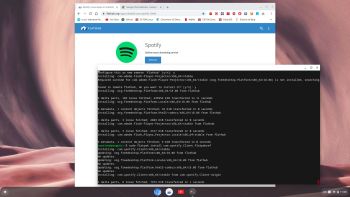 About ChromX
About ChromX
I have compiled Chromium OS from source for the fourth time. Chromium OS is an open-source project that aims to build an operating system that provides a fast, simple, and more secure computing experience for people who spend most of their time on the web. My Chromium OS Build 190824 is for all 64 bit “normal” Desktop computers and laptops. If you have unusual hardware you could check out ArnoldTheBat’s special Chromium OS builds.
Most important changes
This version (190824) replaces version 181218. You can now use Flatpak to install Spotify and many other nice/necessary apps. Read at my INFO site about how to use Flatpak.
The difference between Chromium OS and Google Chrome OS
Chromium OS is the open source project, used primarily by developers, with code that is available for anyone to checkout, modify, and build. Google Chrome OS is the Google product that OEMs ship on Chromebooks for general consumer use.
Why should I use ChromX?
They are many Chromium OS builds out there. Many more mature and ready to go than ChromX. For example CloudReady. ChromX Build 190824 is nevertheless more fun to use in my opinion. Using Flatpak you can tailor the Chromium OS system according to your needs.
SCREENSHOTS when ChromX is running
1. Installing Flatpak
2. Installing Linux BETA (a Debian system)
3. Installing Spotify
4. Installing Gimp
5. ChromX Desktop (you can use any picture you have on your computer as wallpaper)
RaspEX Rpi4 – Build 190812 based on Ubuntu 19.10 – with OpenCPN 5.0.0 (navigation software)
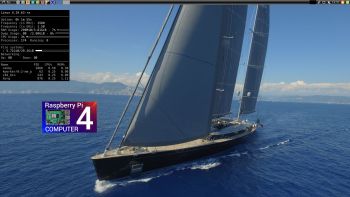 RaspEX Rpi4 – Build 190812 based on upcoming Ubuntu 19.10 – with OpenCPN 5.0.0 (latest stable version released 190323) – especially made for the new Raspberry Pi 4, but it can of course also be used on a Raspberry Pi 3 Model B+, Raspberry Pi 3 Model B and Raspberry Pi 2 Model B.
RaspEX Rpi4 – Build 190812 based on upcoming Ubuntu 19.10 – with OpenCPN 5.0.0 (latest stable version released 190323) – especially made for the new Raspberry Pi 4, but it can of course also be used on a Raspberry Pi 3 Model B+, Raspberry Pi 3 Model B and Raspberry Pi 2 Model B.
OpenCPN is a free software (GPLv2) project to create a concise chart plotter and navigation software, for use underway or as a planning tool. OpenCPN is developed by a team of active sailors using real world conditions for program testing and refinement.
REPLACEMENT
This build (190812) replaces build 181120. Ubuntu has been upgraded to version 19.10 and OpenCPN to version 5.0.0 – latest stable version. Build 190812 is made especially for the new Raspberry Pi 4, but can of course also be used on a Raspberry Pi 3 Model B+, Raspberry Pi 3 Model B and a Raspberry Pi 2 Model B.
The Desktop environment LXDE is used. The “Lightweight X11 Desktop Environment” is an extremely fast-performing and energy-saving desktop environment. LXDE uses less CPU and less RAM than other environments. It is especially designed for cloud computers with low hardware specifications, such as netbooks, mobile devices (e.g. MIDs) or older computers.
ABOUT RaspEX Build 190812
RaspEX is a Linux ARM system for Raspberry Pi 4, Pi 3 Model B, Model B+ and Pi 2 model B. It is based on Debian Buster (Debian 10), Eoan Ermine (upcoming Ubuntu 19.10) and Linaro (Open Source software for ARM SoCs). In this new version (190812) I’ve installed OpenCPN 5.0.0.
Read this OpenCPN Review….
Compatibility :: August 2019
Unfortunately not all systems made for Raspberry Pi 3 and 2 will run on the new Raspberry Pi 4 computer. They need to be upgraded with a new kernel. I therefore have to upgrade the systems I distribute. I.e. RaspEX, RaspEX with OpenCPN, RaspEX BunsenLabs, RaspEX Kodi, RaspAnd Marshmallow, RaspAnd Nougat 7.1.2, RaspAnd Oreo 8.1, RaspAnd Pie, EXTON OpSuS Rpi, FedEX Rpi3 and RaspArch. I have until now (190812) only upgraded RaspEX, RaspEX Kodi, RaspArch and RaspEX with OpenCPN. Read about the new Raspberry Pi 4 .
SCREENSHOTS
1. RaspEX version 190812 running OpenCPN as the ordinary user raspex
2. RaspEX version 190812 running OpenCPN as root
3. OpenCPN 4.4.0 running on the 7″ Touchscreen Monitor for Raspberry Pi (old version OpenCPN)
4. OpenCPN 4.4.0 – Boston (old version OpenCPN)
5. OpenCPN World Map (old version of OpenCPN)
6. OpenCPN Florida – Cape Canaveral (old version of OpenCPN)
7. OpenCPN New York – Approaches to New York (old version of OpenCPN)
8. OpenCPN Stockholm Archipelago (old version of OpenCPN)
RaspArch Rpi4 Build 190809 :: Run Arch Linux on your new Raspberry Pi 4 computer :: Install using Rufus, Win32 Disk Imager or Etcher in Windows!
 RaspArch Build 190809 especially for the new Raspberry Pi 4 released 190624
RaspArch Build 190809 especially for the new Raspberry Pi 4 released 190624
This version (190809) is especially made for the new Raspberry Pi 4, but it can of course also be used on a Raspberry Pi 3 Model B+, Raspberry Pi 3 Model B and Raspberry Pi 2 Model B.
RaspArch is a “remaster” of Arch Linux ARM. The original compressed system is of about 230 MB. After I have added the LXDE Desktop environment, PulseAudio, Firefox, Yaourt and Gimp the system increased a lot. RaspArch is a “ready-to-go” ARM system. It must be installed on a Raspberry Pi 4, Raspberry Pi 3 Model B+, Raspberry Pi 3 Model B or Raspberry Pi 2 Model B computer.
BENEFITS of Arch Linux/RaspArch
“Cutting Edge”-software and speed. A member on this site recently wrote this about RaspArch: I’ve used Slackware, Debian, Gentoo, Ubuntu & Arch. I prefer Arch. Ubuntu is easier to install, Arch is easier to keep up to date. You do not go through big, painful, changes every year instead you just update, once in a while, make changes if instructed. Arch has most of the benefits of Gentoo without the pain of recompiling _everything_. When you do need to build a package in Arch its painless especially if you use one of the tools that support AUR (I like Yaourt). Arch avoids the politics of Debian and Ubuntu and delivers a great Linux distribution. RaspArch now brings these advantages to the Pi 2.
Study all installed packages in RaspArch
SCREENSHOTS
Screenshot 1 of RaspArch’s Desktop – logged in as archpi
Screenshot 2 of RaspArch’s Desktop – YouTube running
Screenshot 3 of RaspArch’s Desktop – Wicd running
Screenshot 4 – Yaourt running (while installing Geany)
Screenshot 5 of RaspArch’s Desktop – logged in as root
RaspEX Rpi4 based on upcoming Ubuntu 19.10 “Eoan Ermine” with LXDE, kernel 4.19.63-raspex-v7l+, Raspotify, RealVNC, PuTTy, Samba and Bluetooth – Build 190807
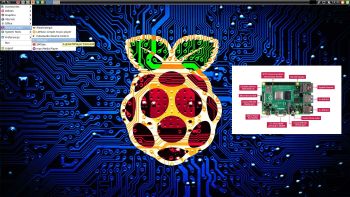 NEWS 190807 about RaspEX with LXDE based on (upcoming) Ubuntu 19.10 Eoan Ermine. Works on the new Raspberry Pi 4
NEWS 190807 about RaspEX with LXDE based on (upcoming) Ubuntu 19.10 Eoan Ermine. Works on the new Raspberry Pi 4
I have upgraded the whole system and replaced the old kernel 4.19.50-exton-v7+ with kernel 4.19.63-raspex-v7l+. RaspEX Build 190807 is a Linux ARM system for Raspberry Pi 4, 3 Model B, 3 Model B+ and Raspberry Pi 2. It is based on Debian 10 Buster, Ubuntu 19.10 and Linaro (Open Source software for ARM SoCs). In this new version (190807) I’ve installed Wicd Network Manager. Both Firefox and Midori Private Browser are pre-installed. I have also installed Samba and RealVNC so you can connect to your Windows computers in your Home Network and/or control RaspEX on your Raspberry Pi 4, Pi 3 or Pi 2 from your Windows computers with VNC Viewer and/or PuTTY (Telnet and SSH client). Furthermore some extra Network Tools, SMTube (YouTube browser which allows to browse, search and play YouTube videos), PulseAudio for better sound in YouTube and Raspotify – Raspotify is a Spotify Connect client for Raspbian on the Raspberry Pi that just works. Study all installed packages in RaspEX Build 190807.
Raspberry Pi 4: How much better is it than the Raspberry Pi 3 Model B+?
Compatibility :: August 2019
Unfortunately not all systems made for Raspberry Pi 3 and 2 will run on the new Raspberry Pi 4 computer. They need to be upgraded with a new kernel. I therefore have to upgrade the systems I distribute. I.e. RaspEX, RaspEX with OpenCPN, RaspEX BunsenLabs, RaspEX Kodi, RaspAnd Marshmallow, RaspAnd Nougat 7.1.2, RaspAnd Oreo 8.1, RaspAnd Pie, EXTON OpSuS Rpi, FedEX Rpi3 and RaspArch. I have until now (190807) only upgraded RaspEX and RaspEX Kodi. Read about the new Raspberry Pi 4 .
SCREENSHOTS
Screenshot 1 – raspex’s Desktop 190807
Screenshot 2 – root’s Desktop 190807
Screenshot 3 – running YouTube in Firefox
Screenshot 4 – RaspEX connected to Windows via Samba
Screenshot 5 – RaspEX connected to Windows via PuTTy
Screenshot 6 – RaspEX “running on” Windows with VNC-viewer
Screenshot 7 – RaspEX using Pavucontrol (for sound control)
Screenshot 8 – RaspEX running SMPlayer
Screenshot 9 – RaspEX running the Bluetooth Manager
Screenshot 10 – RaspEX running Raspotify
Screenshot 11 – Resizing system
RaspEX Kodi Rpi4 with LXDE and Kodi 18.3 Media Center “Leia” with Netflix, Plex and Amazon Video addons – Build 190803
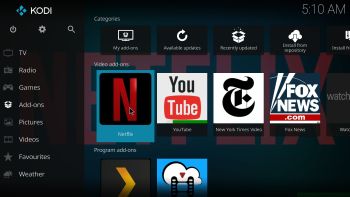 ABOUT RaspEX Kodi
ABOUT RaspEX Kodi
RaspEX Kodi Build 190803 with LXDE/Kodi Desktops can be downloaded from SourceForge.net for free. The system is made especially for the new Raspberry Pi 4, but can of course also be used on a Raspberry Pi 3 Model B+, Raspberry Pi 3 Model B and on a Raspberry Pi 2 Model B. RaspEX Kodi is based on Debian 10 Buster, Raspbian and Kodi Media Center. In RaspEX Kodi I’ve added the LXDE Desktop with many useful applications such as VLC Media Player and NetworkManager. Makes it easy to configure your wireless network. I’ve also upgraded Kodi to version 18.3 Leia, which makes it possible to include useful addons such as Netflix, Plex and Amazon Video. Which I’ve done. Study all included packages in RaspEX Kodi.
RaspEX Kodi performance
RaspEX Kodi is a very fast and responsive Rpi system. Much due to very low memory (RAM) usage. About 120 MB as this screenshot shows. I’ve said that RaspEX LXDE Build 181015 is very fast. RaspEX Kodi is even faster especially if you use the new Raspberry Pi 4 to run it. The video and sound quality is also very very good. Even while running RaspEX Kodi on big TV screens. I.e. you can really enjoy Netflix and YouTube running on your Rpi mini computer!
SCREENSHOTS
1. Running Kodi
2. The LXDE Desktop logged in as the ordinary user pi
3. Netflix running showing very good video quality
4. YouTube running showing very good video quality
5. Choosing program addons in Kodi
6. The LXDE Desktop logged in as root (super admin)
7. Kodi system info
8. VLC running showing very good video quality
Raspberry Pi is a trademark of Raspberry Pi Foundation
Kodi is a trademark of XBMC Foundation
andex.exton.net – latest is AndEX Pie 9.0 (without GAPPS) and AndEX Oreo 8.1 (with GAPPS)!
and about my Pie, Oreo, Nougat, Marshmallow and Lollipop versions for Raspberry Pi 3/2 at
raspex.exton.se – latest is RaspAnd Pie 9.0 (without GAPPS) and RaspAnd Oreo 8.1 (with GAPPS)!
Run Raspberry Pi’s PIXEL Desktop on a PC or Mac – an Exton modified Build 190705 with Refracta Tools (so you can create your own Raspberrypi Debian 10 Pixel system)
 NEWS 190705 about Raspberry Pi Debian 10 Pixel – 32bit – an Exton Build
NEWS 190705 about Raspberry Pi Debian 10 Pixel – 32bit – an Exton Build
My previous Debian Pixel Build from is from 180928 . Study all included packages in Build 190705- latest by 190705. I’ve added NetworkManager and also Wicd, which makes it easier to configure wireless connections. Choose the one which works for you.
NEWS 180928 – a YouTube video about Debian Pixel
I’ve discovered a YouTube video about my Debian Pixel Build 170425. The video is called Debian Pixel..Exton forks it for you..
This video is of course also valid for Build 190705 and 180928. By watching the video you can learn a lot about Debian Pixel’s features.
Most important changes in Build 190705
This build replaces version 161223 , 170425, 180316 and 180928 . I’ve upgraded Raspbian/Debian from Stretch to Buster – Debian 10 stable to be officially released tomorrow (190706). I’ve also upgraded the kernel from 4.9.0-9-686-pae to 4.19.0-5-686-pae. I’ve also included kernel 4.19.0-5-686, which shall be used on older computers. PAE (Physical Address Extension) increases the physical memory addressable by the system from 4 GB to 64 GB. Firefox have been installed so you’ll have a browser when logged in as root. You can’t run Chromium as root. Another good thing about Firefox is that you can use it to watch Netflix movies.
OLD NEWS FROM 161223
On December 22, 2016 I read that the Raspberry Pi Foundation had announced the release of a new PIXEL image that can be booted on a PC or Mac. Study this site. I saw immediately that there was no installer included, which I thought was a little disappointing. Come to think of Refracta tools, which work very well in Debian and Ubuntu. I quickly made a “remix” of the Raspberry Pi Foundation PIXEL image. My remix thus include Refracta tools. This means that you can easily install the system to hard drive and you can just as easily make your own remix of the Raspberry Pi Foundation PIXEL image. I’ve added a few packages. Most important Synaptic, which I find essential.
About the PIXEL Desktop
Raspbian had its biggest update ever in September, 2016, thanks to a dazzling new desktop environment called PIXEL. Raspbian with PIXEL (which stands for “Pi Improved Xwindow Environment, Lightweight”) is a huge software update to the desktop environment. It introduces a crisp new interface, and is brimming with new programs and features.
SCREENSHOTS
Screenshot 1 – Spotify running
Screenshot 2 – Samba running (reach your Windows computers in your network)
Screenshot 3 – Refracta Snapshot has started
Screenshot 4 – Refracta Installer has started in VMware
Screenshot 5 – Wireless connection with NetworkManager and Wicd (installed in Build 170425, 180316, 180928 and 190705)
Screenshot 6 – Wifi connection using NetworkManager – in detail
CruxEX 3.5 64 bit Linux Live USB with LXDE, Nvidia Graphics Driver and Google Chrome (for Netflix) – Build 190630
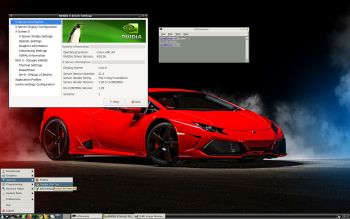 CruxEX 3.5 64 bit Linux Live USB is based on CRUX 3.5 (latest version, released 190611), which is all Linux enthusiasts/nerds favorite OS. (CRUX is a lightweight Linux distribution for the x86_64 architecture targeted at experienced Linux users. The primary focus of this distribution is keep it simple, which is reflected in a straightforward tar.gz-based package system, BSD-style initscripts, and a relatively small collection of trimmed packages. The secondary focus is utilization of new Linux features and recent tools and libraries. CRUX also has a ports system which makes it easy to install and upgrade applications). CruxEX 3.5 2019 uses the LXDE Desktop environment. I have replaced the original CRUX kernel 4.18 with “my” special kernel 5.1.12-exton, with support for “extra everything”.
CruxEX 3.5 64 bit Linux Live USB is based on CRUX 3.5 (latest version, released 190611), which is all Linux enthusiasts/nerds favorite OS. (CRUX is a lightweight Linux distribution for the x86_64 architecture targeted at experienced Linux users. The primary focus of this distribution is keep it simple, which is reflected in a straightforward tar.gz-based package system, BSD-style initscripts, and a relatively small collection of trimmed packages. The secondary focus is utilization of new Linux features and recent tools and libraries. CRUX also has a ports system which makes it easy to install and upgrade applications). CruxEX 3.5 2019 uses the LXDE Desktop environment. I have replaced the original CRUX kernel 4.18 with “my” special kernel 5.1.12-exton, with support for “extra everything”.
Kernel and installed packages
Kernel 5.1.12 is one of the latest available stable kernels as of 190630. Among all installed and updated applications are Firefox, Google Chrome (for Netflix), GParted, PCManFM, Pulseaudio, Gimp and Wicd. Furthermore compilation tools so that you can install programs from source. Note: Google Chrome is not in CRUX repositories. Nvidia Graphics Driver 430.26 is pre-installed. It will be automatically used if your computer has support for it.
Runs from RAM
One good thing with CruxEX is that it is a live system (which CRUX original isn’t) and that you can run CruxEX super fast from RAM.
Unique
CruxEX 3.5 2019 build 190630 is – as my previous CRUX-remasters – unique in the world. I.e. there is no other CRUX Live CD/USB (as far as I know). In any case, not for downloading. The good thing with CruxEX is that it is a live system (which CRUX original isn’t) and that you can run CruxEX super fast from RAM. Also that you can install CruxEX to hard drive in about 5 min and then have a ready-to-go CRUX desktop system. You can after that install any (extra) desktop environment you like.
SCREENSHOTS
1. The LXDE Desktop – Nvidia configuration
2. Prt-get in action
3. CruxEX running from USB in VirtualBox
4. The USB live boot screen
5. Netflix running in Google Chrome
